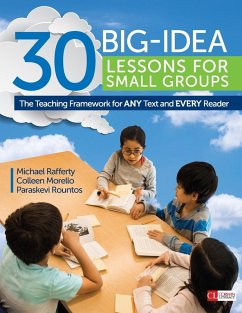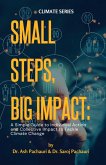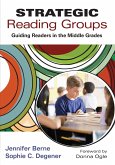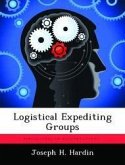Michael Rafferty, Colleen Morello, Paraskevi Rountos
30 Big-Idea Lessons for Small Groups
The Teaching Framework for ANY Text and EVERY Reader
Michael Rafferty, Colleen Morello, Paraskevi Rountos
30 Big-Idea Lessons for Small Groups
The Teaching Framework for ANY Text and EVERY Reader
- Broschiertes Buch
- Merkliste
- Auf die Merkliste
- Bewerten Bewerten
- Teilen
- Produkt teilen
- Produkterinnerung
- Produkterinnerung
30 Big Idea Lessons for Small Groups provides an amazing framework, with a bank of engagement tools, that gets students interacting with texts. Follow this unique 4-part process to develop students' literal, inferential, evaluative, and analytical skills: Engage: Before Reading Students use a tactile tool like a topic card or a pyramid Discuss: During Reading Students read and mark up a short text Deep-See Think: After Reading Students re-read and revise their interpretations together Connect: After Reading Students begin to transfer their understandings to other texts
Andere Kunden interessierten sich auch für
![Small Wars, Big Stakes: Coercion, Persuasion, and Airpower in Counterrevolutionary War Small Wars, Big Stakes: Coercion, Persuasion, and Airpower in Counterrevolutionary War]() Norman J. BrozenickSmall Wars, Big Stakes: Coercion, Persuasion, and Airpower in Counterrevolutionary War61,99 €
Norman J. BrozenickSmall Wars, Big Stakes: Coercion, Persuasion, and Airpower in Counterrevolutionary War61,99 €![Small Steps, Big Impact Small Steps, Big Impact]() Ash PachauriSmall Steps, Big Impact13,99 €
Ash PachauriSmall Steps, Big Impact13,99 €![Born Small With A Big Purpose Born Small With A Big Purpose]() Darnell HuntleyBorn Small With A Big Purpose30,99 €
Darnell HuntleyBorn Small With A Big Purpose30,99 €![Small Steps, Big Differences Small Steps, Big Differences]() Hilary CraigSmall Steps, Big Differences21,99 €
Hilary CraigSmall Steps, Big Differences21,99 €![Small Wars in a Big Theater: Special Operations Air Component Integration with the Joint Air Component in Theater Operations Small Wars in a Big Theater: Special Operations Air Component Integration with the Joint Air Component in Theater Operations]() William P. WestSmall Wars in a Big Theater: Special Operations Air Component Integration with the Joint Air Component in Theater Operations61,99 €
William P. WestSmall Wars in a Big Theater: Special Operations Air Component Integration with the Joint Air Component in Theater Operations61,99 €![Strategic Reading Groups Strategic Reading Groups]() Jennifer BerneStrategic Reading Groups31,99 €
Jennifer BerneStrategic Reading Groups31,99 €![Logistical Expediting Groups Logistical Expediting Groups]() Joseph H. HardinLogistical Expediting Groups61,99 €
Joseph H. HardinLogistical Expediting Groups61,99 €-
-
-
30 Big Idea Lessons for Small Groups provides an amazing framework, with a bank of engagement tools, that gets students interacting with texts. Follow this unique 4-part process to develop students' literal, inferential, evaluative, and analytical skills: Engage: Before Reading Students use a tactile tool like a topic card or a pyramid Discuss: During Reading Students read and mark up a short text Deep-See Think: After Reading Students re-read and revise their interpretations together Connect: After Reading Students begin to transfer their understandings to other texts
Hinweis: Dieser Artikel kann nur an eine deutsche Lieferadresse ausgeliefert werden.
Hinweis: Dieser Artikel kann nur an eine deutsche Lieferadresse ausgeliefert werden.
Produktdetails
- Produktdetails
- Verlag: Corwin
- Seitenzahl: 250
- Erscheinungstermin: 4. Mai 2016
- Englisch
- Abmessung: 280mm x 216mm x 14mm
- Gewicht: 639g
- ISBN-13: 9781506334387
- ISBN-10: 1506334385
- Artikelnr.: 44475782
- Herstellerkennzeichnung
- Libri GmbH
- Europaallee 1
- 36244 Bad Hersfeld
- gpsr@libri.de
- Verlag: Corwin
- Seitenzahl: 250
- Erscheinungstermin: 4. Mai 2016
- Englisch
- Abmessung: 280mm x 216mm x 14mm
- Gewicht: 639g
- ISBN-13: 9781506334387
- ISBN-10: 1506334385
- Artikelnr.: 44475782
- Herstellerkennzeichnung
- Libri GmbH
- Europaallee 1
- 36244 Bad Hersfeld
- gpsr@libri.de
Mike Rafferty is the Director of Teaching and Learning in Region 14 Schools in Connecticut. He has worked as a classroom teacher, a Reading Recovery teacher, a reading consultant, and a curriculum leader for language arts. He has worked with numerous schools to develop coherence from curriculum to classroom. He has led workshops and presented at conferences on ways for schools to ensure meaningful small group experiences for all students as well as how to implement a successful RTI program. He is also a Graduate Instructor at Southern Connecticut State University, leading courses in reading assessment, intervention and literacy leadership.
Chapter 1. Big-Idea Groups: Scaffolded Reading Instruction Where Engagement
Rules
The Ultimate Goal: Real Student Independence
Now Look at Student Independence During Big-Idea Groups
Four Facets of the Framework
How Big-Idea Groups Fit Within Other Small-Group Models
A Few Important Frameworks for Reading Closely
The Effective Environment Around Close Reading
What About Guided Reading and Strategic Reading?
What's Ahead in This Book?
An Introductory Big-Idea Lesson
On Another Day: Adapting the Introductory Lesson With an Informational Text
The Great White Space
Chapter 2. The Lesson Design
The Tweaks to DRTA
Five Phases of the Lesson
Time Factors
When to Begin?
How Do They Fit Within Units of Study?
A Trial Run: The "Why" Behind Each Phase
Phase 1: Engaging
Phase 2: Discussing
Phase 3: Deep-See Thinking
Phase 4: Connecting
Phase 5: Assessing
Chapter 3. The Tools of Engagement
Interesting Texts
Collaboration
Autonomy
Real-World Instruction
Coherence
Expository Expectation Map
Important Versus Interesting
Ranking Characters
Ranking the Table of Contents
Semantic Word Ranking
Sketch-to-Stretch
Staircase Label
Vocabulary Karaoke
Teacher Involvement
Chapter 4. The 30 Lesson Planners
Chapter 5. Transferring Thinking Across the Day
Teacher Variety During Small-Group Instruction in the Reading Block
Agency: The Ability to Fly on Your Own
Connecting Conferring to Big Ideas Across the Day
Creating a Community Connecting to a Common Beacon
Making Homework a Matter Worth Doing
Chapter 6. Assessing Readers Within and Beyond the Group
The Rubric
Classroom Examples
Phase 1: Engaging
Phase 2: Discussing
Phase 3: Deep-See Thinking
Phase 4: Connecting
Responsible Talk
Assessing Speaking and Listening
Tracking Data to Help Drive Instructional Adjustments
Chapter 7. Useful Forms and Lists for Big-Idea Groups
Tactile Tool Forms
Box and Bullets
Character Karaoke
Charting the Chapters
Moving to Make Meaning
Pyramid of Perspectives
Semantic Circle
Tactile Chart
Vocabulary Karaoke
Topics Card
Other Big-Idea-Worthy Texts
Formative Assessment Data Sheet
Build Your Own Big-Idea Lessons Kit
Rules
The Ultimate Goal: Real Student Independence
Now Look at Student Independence During Big-Idea Groups
Four Facets of the Framework
How Big-Idea Groups Fit Within Other Small-Group Models
A Few Important Frameworks for Reading Closely
The Effective Environment Around Close Reading
What About Guided Reading and Strategic Reading?
What's Ahead in This Book?
An Introductory Big-Idea Lesson
On Another Day: Adapting the Introductory Lesson With an Informational Text
The Great White Space
Chapter 2. The Lesson Design
The Tweaks to DRTA
Five Phases of the Lesson
Time Factors
When to Begin?
How Do They Fit Within Units of Study?
A Trial Run: The "Why" Behind Each Phase
Phase 1: Engaging
Phase 2: Discussing
Phase 3: Deep-See Thinking
Phase 4: Connecting
Phase 5: Assessing
Chapter 3. The Tools of Engagement
Interesting Texts
Collaboration
Autonomy
Real-World Instruction
Coherence
Expository Expectation Map
Important Versus Interesting
Ranking Characters
Ranking the Table of Contents
Semantic Word Ranking
Sketch-to-Stretch
Staircase Label
Vocabulary Karaoke
Teacher Involvement
Chapter 4. The 30 Lesson Planners
Chapter 5. Transferring Thinking Across the Day
Teacher Variety During Small-Group Instruction in the Reading Block
Agency: The Ability to Fly on Your Own
Connecting Conferring to Big Ideas Across the Day
Creating a Community Connecting to a Common Beacon
Making Homework a Matter Worth Doing
Chapter 6. Assessing Readers Within and Beyond the Group
The Rubric
Classroom Examples
Phase 1: Engaging
Phase 2: Discussing
Phase 3: Deep-See Thinking
Phase 4: Connecting
Responsible Talk
Assessing Speaking and Listening
Tracking Data to Help Drive Instructional Adjustments
Chapter 7. Useful Forms and Lists for Big-Idea Groups
Tactile Tool Forms
Box and Bullets
Character Karaoke
Charting the Chapters
Moving to Make Meaning
Pyramid of Perspectives
Semantic Circle
Tactile Chart
Vocabulary Karaoke
Topics Card
Other Big-Idea-Worthy Texts
Formative Assessment Data Sheet
Build Your Own Big-Idea Lessons Kit
Chapter 1. Big-Idea Groups: Scaffolded Reading Instruction Where Engagement
Rules
The Ultimate Goal: Real Student Independence
Now Look at Student Independence During Big-Idea Groups
Four Facets of the Framework
How Big-Idea Groups Fit Within Other Small-Group Models
A Few Important Frameworks for Reading Closely
The Effective Environment Around Close Reading
What About Guided Reading and Strategic Reading?
What's Ahead in This Book?
An Introductory Big-Idea Lesson
On Another Day: Adapting the Introductory Lesson With an Informational Text
The Great White Space
Chapter 2. The Lesson Design
The Tweaks to DRTA
Five Phases of the Lesson
Time Factors
When to Begin?
How Do They Fit Within Units of Study?
A Trial Run: The "Why" Behind Each Phase
Phase 1: Engaging
Phase 2: Discussing
Phase 3: Deep-See Thinking
Phase 4: Connecting
Phase 5: Assessing
Chapter 3. The Tools of Engagement
Interesting Texts
Collaboration
Autonomy
Real-World Instruction
Coherence
Expository Expectation Map
Important Versus Interesting
Ranking Characters
Ranking the Table of Contents
Semantic Word Ranking
Sketch-to-Stretch
Staircase Label
Vocabulary Karaoke
Teacher Involvement
Chapter 4. The 30 Lesson Planners
Chapter 5. Transferring Thinking Across the Day
Teacher Variety During Small-Group Instruction in the Reading Block
Agency: The Ability to Fly on Your Own
Connecting Conferring to Big Ideas Across the Day
Creating a Community Connecting to a Common Beacon
Making Homework a Matter Worth Doing
Chapter 6. Assessing Readers Within and Beyond the Group
The Rubric
Classroom Examples
Phase 1: Engaging
Phase 2: Discussing
Phase 3: Deep-See Thinking
Phase 4: Connecting
Responsible Talk
Assessing Speaking and Listening
Tracking Data to Help Drive Instructional Adjustments
Chapter 7. Useful Forms and Lists for Big-Idea Groups
Tactile Tool Forms
Box and Bullets
Character Karaoke
Charting the Chapters
Moving to Make Meaning
Pyramid of Perspectives
Semantic Circle
Tactile Chart
Vocabulary Karaoke
Topics Card
Other Big-Idea-Worthy Texts
Formative Assessment Data Sheet
Build Your Own Big-Idea Lessons Kit
Rules
The Ultimate Goal: Real Student Independence
Now Look at Student Independence During Big-Idea Groups
Four Facets of the Framework
How Big-Idea Groups Fit Within Other Small-Group Models
A Few Important Frameworks for Reading Closely
The Effective Environment Around Close Reading
What About Guided Reading and Strategic Reading?
What's Ahead in This Book?
An Introductory Big-Idea Lesson
On Another Day: Adapting the Introductory Lesson With an Informational Text
The Great White Space
Chapter 2. The Lesson Design
The Tweaks to DRTA
Five Phases of the Lesson
Time Factors
When to Begin?
How Do They Fit Within Units of Study?
A Trial Run: The "Why" Behind Each Phase
Phase 1: Engaging
Phase 2: Discussing
Phase 3: Deep-See Thinking
Phase 4: Connecting
Phase 5: Assessing
Chapter 3. The Tools of Engagement
Interesting Texts
Collaboration
Autonomy
Real-World Instruction
Coherence
Expository Expectation Map
Important Versus Interesting
Ranking Characters
Ranking the Table of Contents
Semantic Word Ranking
Sketch-to-Stretch
Staircase Label
Vocabulary Karaoke
Teacher Involvement
Chapter 4. The 30 Lesson Planners
Chapter 5. Transferring Thinking Across the Day
Teacher Variety During Small-Group Instruction in the Reading Block
Agency: The Ability to Fly on Your Own
Connecting Conferring to Big Ideas Across the Day
Creating a Community Connecting to a Common Beacon
Making Homework a Matter Worth Doing
Chapter 6. Assessing Readers Within and Beyond the Group
The Rubric
Classroom Examples
Phase 1: Engaging
Phase 2: Discussing
Phase 3: Deep-See Thinking
Phase 4: Connecting
Responsible Talk
Assessing Speaking and Listening
Tracking Data to Help Drive Instructional Adjustments
Chapter 7. Useful Forms and Lists for Big-Idea Groups
Tactile Tool Forms
Box and Bullets
Character Karaoke
Charting the Chapters
Moving to Make Meaning
Pyramid of Perspectives
Semantic Circle
Tactile Chart
Vocabulary Karaoke
Topics Card
Other Big-Idea-Worthy Texts
Formative Assessment Data Sheet
Build Your Own Big-Idea Lessons Kit








